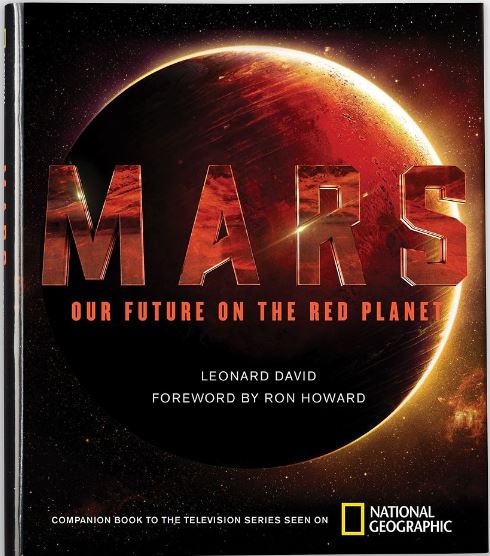A spectacular Mars series will be launched by National Geographic on Monday, November 14th. In this fictitious story, an international coalition of Earth’s best scientists – the Daedalus Crew – is travelling to the Red Planet to start a new era of interplanetary science.
The Mars series portrays the fascinating story about the first crew mission from Earth in a unique, story-telling format. The scenes are set 27 years from now – in the year 2033 – and tell us about the epic journey to Mars.
What’s unusual about this Mars series is that each episode is presented like a real fact news report or documentary, including present-day interviews with eminent scientists – they really do exist.
 When you watch the Mars series, you get the feeling that it is really happening. It is presented in a factual way, as if reporters are keeping the viewers up-to-date about what is going on between here and Mars at the moment. (Image: twitter.com/NatGeoChannelUK)
When you watch the Mars series, you get the feeling that it is really happening. It is presented in a factual way, as if reporters are keeping the viewers up-to-date about what is going on between here and Mars at the moment. (Image: twitter.com/NatGeoChannelUK)
A unique Mars series
Not only does the Mars series tell us the story of the first human mission to the Red Planet, but it also gives us loads of current and historic context.
The international crew consists of six people:
1. Marta Kamen, a Russian geologist and exobiologist (studies life outside the Earth).
2. Javier Delgado, a Spanish hydrologist (studies the movement, distribution, and quality of water on Earth and other planets) and geochemist.
 The crew. (Image: mars.natgeotv.com/uk/daedalus-crew/)
The crew. (Image: mars.natgeotv.com/uk/daedalus-crew/)
3. Hana Seung, an American mission pilot and systems engineer.
4. Amerie Durand, a French physician and biochemist.
5. Robert Foucault, a Nigerian mechanical engineer and roboticist (studies robots).
6. Ben Sawyer, an American systems engineer who is mission commander.
About the Mars series
It is the year 2033, and Earth’s first mission to Mars is about to become a dream come true. As the clock counts down from 90 seconds to landing, the crew endures the final harrowing moments before touching down on another world millions of miles away.
 This companion book to the Mars video series is in hardcover – it contains 288 pages and 200 colour illustrations. (Image: shop.nationalgeographic.com)
This companion book to the Mars video series is in hardcover – it contains 288 pages and 200 colour illustrations. (Image: shop.nationalgeographic.com)
They are the best trained astronauts humanity has ever sent out into deep space. Even so, the maiden crew of the Daedalus – their spacecraft – must push itself nearly over the brink of human capability in order to effectively establish our first sustainable colony on Mars.
Imagine sharing cramped quarters, having no privacy, and enduring the stress of working with five other people every single day for a year – and then for the rest of your life after landing on Mars. National Geographic suggests that psychology, more than aerospace engineering, is perhaps the key to sending human crews to mars.
Video – Interview with Mars astronauts
How do we survive in a planet which we were not made for? In this interview with Sir Trevor McDonald, four brave astronauts talk about their mission, their fears, and hopes.
Ben Sawyer believes the hardest thing will be everyday survival. Marta Kamen says that the Red Planet has the potential to support life.
Robert Foucault believes he will miss the fresh air the most.

